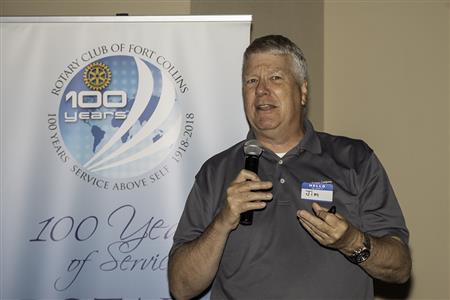 Last week we were “wowed’ and informed by engineer and NASA ambassador, Jim Paradise, with a talk entitled “Space Exploration: Going Where No Man Has Before”. Jim reported on NASA’s recent achievements – highlighting Mars exploration, contact with an asteroid, as well as recent discoveries about Jupiter and Pluto. Photos and videos were gorgeous and breathtaking. We saw findings from the Kepler telescope and heard expectations from future telescopes. Finally, Jim described future NASA missions.
Last week we were “wowed’ and informed by engineer and NASA ambassador, Jim Paradise, with a talk entitled “Space Exploration: Going Where No Man Has Before”. Jim reported on NASA’s recent achievements – highlighting Mars exploration, contact with an asteroid, as well as recent discoveries about Jupiter and Pluto. Photos and videos were gorgeous and breathtaking. We saw findings from the Kepler telescope and heard expectations from future telescopes. Finally, Jim described future NASA missions.Newer findings about Mars were given the most attention. Mars' thin and decreasing atmosphere, low gravity and many findings indicate the presence of water in the past. NASA travels to Mars every 2 years because of the close proximity of our planets at that interval. First, USA vehicles orbited and took pictures with ever increasing resolution eventually allowing for complete mapping of the planet and providing safe landing sites. Mars rovers, starting with Spirit, then Opportunity ( water evidence), next Curiosity (further evidence of water in the past) and Insight (2018) have been able to sample surface and below the surface. Each Mars rover has had mechanical (e.g., heavier payload and bigger wheels) and technological improvements. The 2020 rover (Curiosity 2) will be equipped with a small helicopter. Moving further out in our solar system, investigation of the asteroid belt has shown that some asteroids have small moons. Osiris Rex (after a 7 year journey) will mine and deliver back a sample from an asteroid’s surface!
In other recent discoveries, Jupiter has massive constant cyclones at both poles; Pluto has at least five moons; There is a second asteroid belt beyond Pluto and a cloud consisting of thousands of comets. We recently landed on a comet! Next was a lesson in perspective - illustrations showing the relative size of the planets, our sun and our galaxy. The Kepler telescope looks at stars in our galaxy, notes minute changes in light from the star and extrapolates the presence of orbiting planets. So far, 7,589 planets have been identified in our galaxy; many in a zone compatible with the development of life. Given the estimate of 2 trillion galaxies there should be 500 billion planets; in the “habitable” zone. Can we be alone?
NASA’s expectations for the near future include a return to the moon by 2024, a residence there in 10 years and astronauts on Mars in 15 years. What an age we live in!